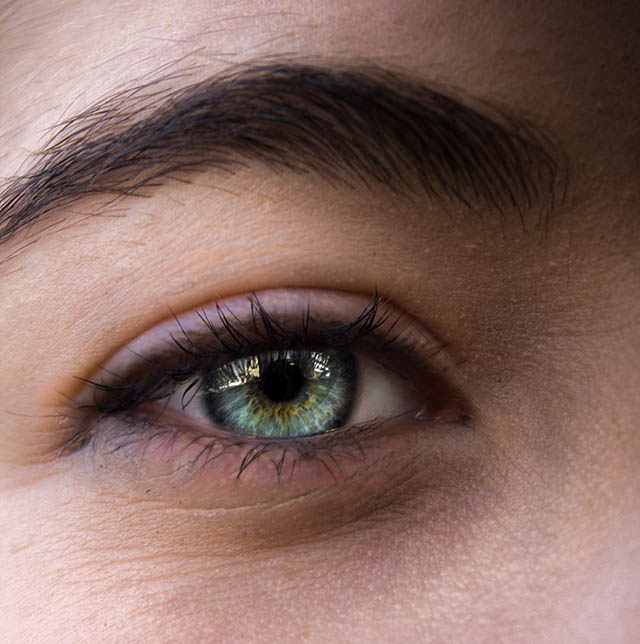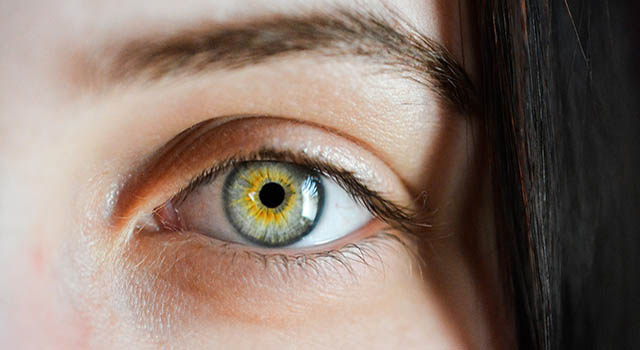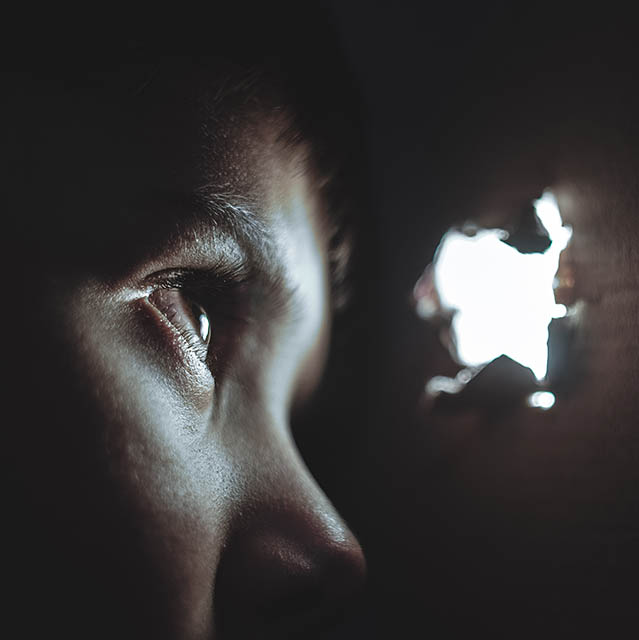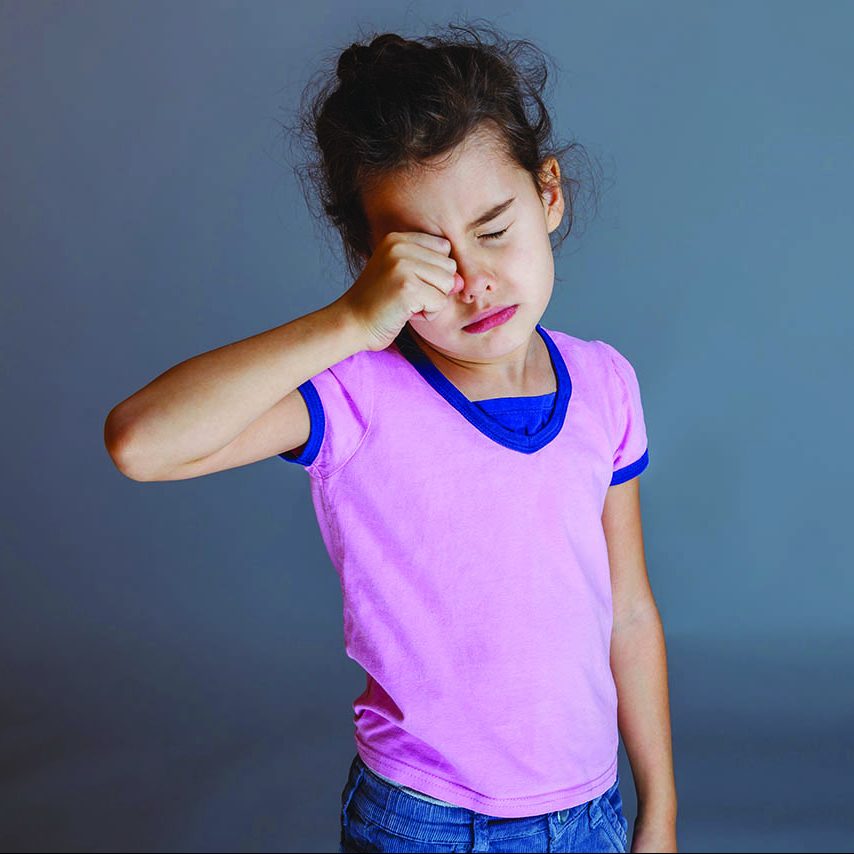Dr. Pink Eye's Top Ten Tips
If you have noticed that your eye is red, you likely have some very important questions.
For example:
- Is this pink eye, (also known as conjunctivitis), or is it something else?
- Is it contagious?
- Is there anything I can do at home?
- Do I need to go to the eye doctor?
Hi, I’m Dr. Harold Ashcraft, an optometrist in Westchester (Los Angeles), California.
I would like to share with you my “Top 10 Tips for the Diagnosis and Treatment of Pink Eye”.
For a priority appointment to see Dr. Ashcraft call 310-620-6495
Tip #1: “Not Pink Eye” Rule:
Pink Eye is redness of the eye that Does Not Have the Following Symptoms:
- Pain in and around the eyes
- Light sensitivity, Blurred vision
- Something in the eye
- Swollen eye that won’t open
- Severe headaches with nausea
- Cloudy cornea (clear front surface of the eye)
- A red ring around the cornea
If you have a red eye with any of these symptoms, you most likely do not have pink eye (because pink eye is redness of the eye WITHOUT these symptoms). However, you may have something potentially more serious that needs immediate treatment. Please call 310-620-6495 for a priority appointment.
Tip #2: Is Your Red Eye Contagious?
Treat it as contagious until you know differently. You don’t want other people to “catch pink eye” while you are finding out what the problem is and getting better yourself.
Tip #3: Do Not Cover Up Red Eyes With Drops.
Don’t use “Get the Red Out Drops”. They can make the problem look like it is gone, but then it may jump back. Red eyes are a sign something is wrong with your eyes, just like pain is a sign something is wrong in your body. You want to address the cause of the red-eye, not simply cover it up. Covering up a red-eye makes it harder to diagnose and treat the real cause.
Tip#4: Use Proven Home Remedies for Pink Eye:
First of all, use tried and proven home remedies and treatments. Don’t believe everything Dr. Google has to say. He sometimes has a few crazy ideas and gives bad advice. Do not do weird things like mixing your own salt solution and putting it in your eyes. Do not put diluted apple cider vinegar, diluted lemon, or breast milk in your eyes. Do things that will make your eye better, not worse.
Here are some tried and true home remedies for pink eye: Flush out your eyes with artificial tears or non-preserved saline or eye wash. Use a warm or cold compress. In certain cases, over-the-counter eye drops can help. The most important thing is to do things that make common sense and that will help your eyes feel and get better quickly.
Tip #5: Take Out Your Contacts:
Throw away the contacts and the case. Use “Proven Home Remedies for Pink Eye”. Make sure you do not have pain, light sensitivity or blurred vision. These can be symptoms of a much more serious corneal infection, corneal ulcer, or scratched cornea and a reason to get the problem checked out now. Use the “Red Eye 24-Hour Rule”—if your eye is not better in 24 hours, see an eye doctor.
Tip #6: Are Your Eyes Stuck Together?
Red eyes stuck together with a green or whitish goop are a common sign of a bacterial pink eye. It can start in one eye and then go to the other eye, making you suffer for days or weeks.
It can be very contagious. This is urgent—call us for a priority appointment now at 310-620-6495. You most likely need antibiotic treatment to get rid of this before it gets worse.
Tip #7: Do Your Eyes Itch?
Redness of the eyes with a lot of itching can be a symptom of allergic conjunctivitis or pink eye. Flush out the eyes with artificial tears, non-preserved saline or eyewash. As with all allergies, the first step is to remove the offending agent. Take out your contact lenses. They may be part of the problem. Use an over-the-counter antihistamine or a prescription anti-histamine drop (prescriptions are often stronger and more effective). You can try some Benadryl, but don’t take too much because it can make you sleepy. Most common oral anti-histamines are not very effective on the eyes. If this is an ongoing problem, you need an eye examination to plan longer-term treatments.
Tip #8: “Red Eye 24-Hour Rule”:
If you have a red eye, you have taken out your contacts, you have used the “Tried and True Pink Eye Home Remedies”, and your eye is still red after 24 hours, or if you have any of the signs or symptoms in the Urgent “Not Pink Eye” Rule, this is not normal. Something is going on. It’s time to call us at 310-620-6495 to schedule a priority appointment, find out the cause of the redness, and see if you need to start eye treatment immediately.
Tip #9: See an eye doctor over an emergency room, urgent care, or family doctor when possible.
Eye doctors have special instruments such as eye microscopes to examine your eyes. They have more experience with the many diseases that can affect the eyes directly or indirectly. They can do more specific tests. When you know what the problem is, go to the expert.
Tip #10: Get a Priority Appointment.
Urgent and emergency conditions are best seen on the same day or the next day if the same day is not possible. Your eye may get a lot worse while you are waiting around for an appointment, or if you need to schedule first with your primary doctor and then hope you can get in to see the referral doctor in a timely manner. Patients have lost vision waiting around for their slow insurance plans to get on the ball. We offer priority same-day or next-day appointments for red eyes. Please call us at 310-620-6495 to schedule an appointment. Just mention that you have a red-eye.

What is Pink Eye or Conjunctivitis?
Pink eye, also known as conjunctivitis, is one of the most common and treatable eye conditions among children and adults. Pink eye is an inflammation of the conjunctiva, which is the clear layer surrounding the whites of the eyes and inside of the eyelid. The conjunctiva is essential for keeping small particles like dust and debris out of the eye, as well as for helping the eye stay lubricated.
If you have pink eye, the whites of the eyes and the area under the eyelid will appear pink or reddish.
How Do You Get Pink Eye?
To understand how you get pink eye, just think about the ways NOT TO GET PINK EYE. Follow my guide to prevent pink eye because when it comes to the health of your eyes, prevention is better than treatment.
8 Ways to Prevent Pink Eye
Simple steps can be taken to greatly reduce your chances of getting pink eye:
- Avoid touching or rubbing your eyes. You don’t want to transfer pink eye viruses and bacteria to your eyes.
- Wash your hands frequently with soap and water. Wash your hands right away after touching a person infected with pink eye, or after touching their personal items such as clothes or linens. Use alcohol-based hand sanitizer if soap and water are not available. In general, try to stay away from people who have pink eye.
- Don’t share personal items including towels, pillows, or blankets.
- Don’t share makeup.
- Cover your nose and mouth when sneezing or coughing.
- Frequently clean surfaces including countertops, phones, or bathrooms.
- Clean your eyeglasses and properly clean your contact lenses.
- Don’t allow children to wipe their eyes after they wipe their nose with hands.


What Causes Pink Eye?
There are many causes of pink eye. It is most commonly caused by a virus or bacteria, but it can also be due to allergies or environmental irritants. Pink eye is not just a Los Angeles condition, it occurs everywhere in the world, but different locations can have more or less of certain types of pink eye.
Viral Pink Eye: Many viral strains can lead to pink eye, including the herpesvirus, adenovirus, and viruses responsible for a common cold. Have you had a cold lately or an upper respiratory infection? Is your throat sore? If you answered yes, be especially careful since you may have an extremely contagious type of pink eye.
Bacterial Pink Eye: Have you been around anyone recently who has been sick? When coming into contact with infected individuals or contaminated objects, bacteria quickly spread and can cause pink eye, and sometimes even an ear infection. Some of these common bacteria seen frequently in pink eye include Streptococcus pneumonia, Staphylococcus aureus, and Haemophilus influenzae.
Allergic Pink Eye: Do you have eye allergies? Pink eye can flare up from allergies that happen seasonally, or from allergies that occur year-round. Common culprits for allergy-related pink eye include pollen, dust, pet dander, and mold. Do your eyes itch? Itching is a very common symptom of allergic pink eye.
Environmental Pink Eye: Common irritants include makeup, chlorine from a swimming pool, perfume, dry air, strong chemicals, and even smog. The eye may also get irritated when contact lenses are worn longer than recommended or are not cleaned properly. Irritation can lead to pink eye.
The treatment for pink eye depends on the cause. And remember, your red eye may not be pink eye at all. It may be something else, something often more serious. There are overlapping symptoms of pink eye and many types of pink eye look the same.
If your eye has been red for more than 24 hours (My “24–Hour Red Eye Rule”), something may be wrong and you need a same day or next day pink eye examination. Call us at 310-620-6495 to schedule a “priority” appointment.
Pink Eye Symptoms
- Discoloration or redness of the white part of the eye
- Feeling of a foreign object in eye
- Grittiness
- White, yellow, or green discharge
- Watery tears
- Itching or burning sensation
- Swelling or tenderness in the lymph nodes


Symptoms by Type of Pink Eye
Viral Conjunctivitis or Pink Eye
It is often accompanied by watery or runny tears, itchy eyes, or mild light sensitivity. Viral pink eye may occur in one eye only or both eyes. Occasionally the eyelids will be sticky and shut together upon waking. You may have had a recent sore throat or cold or cough. Viral conjunctivitis may be extremely contagious and can be passed by coughing or sneezing. Take precautions to not give pink eye to others around you.
Bacterial Conjunctivitis or Pink Eye
It usually has a thick mucus-like yellow or yellow-green discharge. Bacterial pink eye often starts in only one eye but then can spread to both eyes. It might occur alongside an ear infection. Bacterial conjunctivitis may be very contagious and can be passed when infected hands touch the eye. It is common in preschoolers up to 6 years of age.
Allergic Conjunctivitis or Pink eye
It can happen in both eyes and includes allergy-like symptoms including itchy, watery, burning, or mild light sensitive eyes. It may also accompany an itchy nose, sneezing, or a sore throat. It can appear seasonally when the pollen counts are high, or it can flare up year-round from irritants such as dust. Allergic conjunctivitis is not contagious.
How to Get Rid of Pink Eye - Pink Eye Treatment
Mild cases of pink eye may go away on their own without treatment. Getting rid of pink eye, including treatments for red eye, will vary depending on its cause and the type of pink eye.
Viral conjunctivitis will run its course, just like the common cold, over the course of about 7 to 14 days. Often, no medication is necessary. Antibiotics are not effective again viral conjunctivitis. However, viral pink eye caused by the Herpes Virus should be treated with oral and or anti-viral drops. Other medications may also be indicated to help you feel better and get better quicker.
A mild case of bacterial conjunctivitis may improve and get better without any medication on its own. However, this approach is kind of risky. It can affect one eye, then the other eye, and drag on for a long time. Do you want to suffer with your eye being red and bothering you and having other people ask you what is wrong? Or, do you want to just speed up the process and get rid of it? Most patients choose to take a short course of antibiotics to shorten and reduce the spread of infection. Antibiotic eye drops for pink eye are commonly prescribed. Antibiotics for pink eye may also come in the form of ointments or sometimes pills. Over the counter pink eye medicine or over the counter pink eye drops are not as effective, often don’t help, and may let the condition get worse.
Allergic conjunctivitis can be relieved by eliminating the allergen or through allergy medications. While symptoms are clearing up, try the following:
- Apply either a cold or warm washcloth over the eye multiple times a day.
- Use artificial tears to provide moisture for the eye and to rinse out the problem.
- Use an eye drop for red eyes that contains an antihistamine. These come in prescription and non-prescription.
- Pink eye drops with a vasoconstrictor (“Get the Red Out”) don’t work as well. You want to find out the cause of the pink eye and get rid of it, not just cover it up.

Home Remedies for Pink Eye
When it comes to home remedies, Dr. Google provides you with the wild west of possibilities. Some of these ideas sound kind of crazy. People have tried putting just about everything in and around their eyes: diluted lemon juice, diluted apple cider vinegar, a milk and honey concoction, coconut oil, a homemade saline made by mixing salt and water, and others.
Instead of relying on pink eye treatments that are unproven and may actually hurt you, try these tried and true treatments at home for pink eye:
Proven and Tested Home Remedies for Pink Eye
Rinse your eye out with saline solution or artificial tear eye drops.
These “natural tears” will help to soothe symptoms by lubricating the eye, reducing irritation and burning, as well as help get rid of any irritants or allergens that may have gotten into your eye. You do not need a prescription for these drops and can easily find them over-the-counter. Some recommended brands include the “Systane” family of drops.
Need something immediately? Most of the time it is best to not use water, but if you get something in your eyes and water is all you have, flush out your eyes.
Avoid rubbing or touching your eyes.
If may be hard to do, but try to avoid having physical contact with your eyes when you have pink eye. Rubbing your red eyes can cause further discomfort and worsen symptoms, and it may introduce more irritants to your eyes or eyelids. If you do catch yourself touching your eye, wash your hands thoroughly. It will also help to frequently wash anything that comes into contact with your eyes, including towels, sheets, and pillowcases.
Take a break from wearing eye makeup.
In the same way you want to avoid wearing contact lenses while your eyes are irritated, giving your eyes a break from makeup will help prevent irritants or allergens from making contact with your eyes. Any eye makeup you used while infected with pink eye should be thrown away and replaced with new products.
Control itchy eyes with an eye drop containing antihistamines.
An over-the-counter anti-histamine eye drop I often recommend is Alaway. In the past, Alaway eye drops were only available with a prescription. Treatments of pink eye with antihistamine eye drops are much more effective than vasoconstrictor “get the red out” drops like Visine. Benadryl can also help, but be aware that it can make you sleepy. Non-drowsy antihistamines, like Claritin, do not work well on the eyes. Remember the “24-hour red eye rule”. If your eye is still red after 24 hours, call an eye doctor for a priority appointment.
Place a warm compress over your eyes.
Another easy way to soothe irritation and reduce inflammation is using a compress on the eyes. Take a clean, lint-free washcloth and allow it to soak in warm or cool water. Wring out the extra water, then hold it over your closed eyes for a few minutes until it starts to cool. You can do this many times throughout the day, if necessary. Make sure to prevent spreading the infection by washing your hands after removing the compress and by using a clean washcloth each time. If both eyes are infected, a separate compress should be used for each eye.
If you have a red eye and one of the symptoms you are experiencing is a thick discharge of pus from the eye, which forms a crust along the eyelid and lashes when it dries, a warm compress can also be used to clean that area.
Remove your contact lenses.
If your eyes are inflamed and irritated from pink eye, take out your contact lenses until symptoms improve. To prevent re-infection, throw the affected contacts away and use a new pair of lenses once the pink eye has cleared.
Use an over-the-counter pain medication.
Ibuprofen is a nonsteroidal anti-inflammatory medication that can provide some pain relief and reduce inflammation.
Avoid using redness relief drops, like Visine.
Products like Visine will not treat pink eye and may cause more discomfort. In fact, you should generally avoid using these kinds of eye drops, which provide only a temporary reduction of redness and do not treat the cause of the red eye. Prolonged use of these products can actually make red eye worse and cause a problem known as rebound hyperemia.
Don’t Do Crazy Things; Use Proven and Tested Treatments.
A recent article by the American Academy of Ophthalmology highlighted one of the new crazes, and it might surprise you—breast milk. Here is what it said:
“Breast Milk for Pink Eye?”
“Blogs and social media posts sometimes recommend putting breast milk into a child’s eye if they have pink eye. There is no science that supports using breast milk for pink eye and it could be more harmful than helpful. Eye infections in young children can be very serious—even blinding. Don’t delay seeing a doctor and don’t rely only on folk remedies.”
“Bloggers who recommend breast milk for pink eye say that substances in breast milk can cure infection and soothe inflammation. But one of the few studies into whether breast milk can fight infections not only found that it didn’t cure the most common causes of pink eye—the milk can introduce new bacteria into the eye.”
“For the study, milk was gathered from 23 healthy mothers at a San Francisco hospital. The milk was tested for its effect on common causes of pink eye and was also cultured to find any bacteria already in the milk. Breast milk had a small effect on a few kinds of bacteria, but didn’t work nearly as well as antibiotics. And the bacteria that were already in breast milk could cause other serious eye infections.”
“There is lots of bad advice about pink eye on the internet. Never put anything in your eye that isn’t approved by a doctor. Foods and herbal extracts are not sterile and can make eye conditions much worse.” Retrieved from https://www.aao.org/eye-health/diseases/pink-eye-quick-home-remedies
If you have tried home remedies and still have a red eye after 24 hours, call Dr. Ashcraft at 310-620-6495 to schedule a priority appointment.
How Long Is Pink Eye Contagious?
Viral and bacterial pink eye can be very contagious. It is often spread through personal contact (touching or shaking hands), touching surfaces with germs and then touching your eyes, or through airborne means such as coughing or sneezing.
Viral pink eye can be transmitted to others for its entire duration until it has cleared up.
Bacterial pink eye can spread to others as soon as symptoms appear, for the whole duration of symptoms, and even until twenty-four hours after starting an antibacterial medication.
Pink eye from allergies or irritants is not contagious. In general, it is safe to return to work or school once the symptoms have cleared up.

What Contact Lens Wearers Need to Know About Pink Eye
If you wear contact lenses, think about how you would answer these questions:
- How good are you at cleaning your lenses?
- Do you have a clean case?
- Do you use new solution very day and never top it off?
- Do you replace your lenses on the recommended schedule?
- Do you over wear your contacts?
Remember, an old contact lens is like an old rug. You may try to clean it, but it never really gets clean.
Did you sleep in your lenses or over-wear them, and then notice your eye was red? If you are not very good at taking care of your contacts—replacing them regularly and always taking them out at night—you are at greater risk for a bacterial infection or something much worse, like a corneal ulcer.
If you wear contact lenses, you are at higher risk for getting pink eye. This is especially true if you sleep with your contacts lenses. Not only that, but contact lens wearers need to be very concerned about other more serious causes of red eye, like corneal ulcers or fast-acting infections.
If you wear contacts and your eyes are red, do these things immediately:
- Take your contacts out. Redness is a sign that something is wrong. It’s just like pain in your body that is telling you there is a problem.
- Don’t try to cover up the problem with “Get the Red Out” drops.
- “Red Eye 24-Hour Rule”: If your eye has been red for more than 24 hours, call us now at 310-620-6495 to make an appointment for a red eye exam.
- If you have pain, light sensitivity or blurred vision, you most likely do not have pink eye. Pink eye is redness of the eye without significant pain, light sensitivity or blurred vision. In these cases, you might have a corneal scratch, abrasion or corneal ulcer. You need a complete red eye examination including measurement of your vision and a thorough examination of the cornea (front portion of the eye) with an eye-microscope by a licensed eye doctor. This needs immediate attention.
Pink Eye in Babies
Newborns with Pink Eye Always Need to See a Doctor
According to the Centers for Disease Control, pink eye in newborns is frequently caused by an irritation, infection, or a blocked tear duct. A baby who has these symptoms or other signs of pink eye in the first two weeks after birth should see a healthcare provider.
If newborn pink eye is caused by sexually transmitted infections—like Chlamydia, gonorrhea or others—this condition can be extremely serious. Make an appointment to see your healthcare provider for the appropriate testing and treatment. If you are pregnant and wonder if you might have a sexually transmitted infection, you need to take immediate action. In addition, if you don’t know whether you have a sexually transmitted infection but have a new baby and your new baby has any signs or symptoms of pink eye, see your child’s healthcare doctor immediately.
State law requires most hospitals to put anti-infective drops or ointment in a new baby’s eyes to prevent pink eye.
Special Considerations for Pink Eye in School-Aged Children
If your child wakes up in the morning with gunk in their eyes, it does not automatically mean it is an infection or pink eye.
Rheum, or eye boogers, commonly form from solidified tears or from a thin mucus discharge from the eye. Typically, the eyes will not be red and if you wipe the mucus away it won’t appear again until the next day. This is not the traditional pink eye.
In contrast, conjunctivitis causes a thicker, crustier mucus that is often white, yellow, or greenish and will show up repeatedly throughout the day. The eyes will also be red or pink.
Pink eye can quickly spread among children because of their close proximity to others in classrooms, preschools, or day cares.
In order to prevent an outbreak, parents should notify their child’s school or other important personnel if their child has pink eye. Your child should stay home until they are no longer contagious, or until they get the go ahead from a doctor to go back to school.
Here are a few other tips for parents and teachers to help minimize the spread of pink eye among children:
-
Wash, Wash, Wash!
Many people would be surprised to realize the number of times they touch their eyes, mouth, or nose during the day without realizing it. Washing your hands thoroughly with soap is one of the easiest, but sometimes overlooked, ways to prevent the spread of germs, bacteria, and viruses. The CDC recommends washing your hands for 20 seconds, which is about the same as singing the “Happy Birthday” song twice. Set an example to help make it a lifelong habit for children. If soap and water are not available, alcohol-based hand sanitizers are a good thing to keep on hand. (It should be at least 60% alcohol).
-
Clean, Clean, Clean!
When you think about it, it is not surprising that places with a lot of children—like classrooms—are laden with germs not visible to the naked eye. Kids share toys, books, pencils, and other equipment during play time. They move between sitting at tables, on rugs, and on benches that have been occupied by many other kids. They touch doorknobs and drinking fountains, all the while germs are spreading quickly. Frequently wiping down common surfaces and objects with a disinfectant can go a long way in preventing outbreaks.
-
Hygiene, Hygiene, Hygiene!
Remind kids that when they cough or sneeze, they should cover their nose and mouth and use tissues. Encourage them to not touch or rub their eyes. Wash their pillowcase frequently. Don’t share or reuse hand towels or wash cloths that have touched their faces.
Although pink eye is common—and treatable—among children, taking a few steps to prevent its spread will keep you and your family happier, healthier, and less stressed.
To schedule an appointment for a priority red eye evaluation, call Dr. Ashcraft at 310-620-6495.

PINK EYE FAQ
Questions:
- What is pink eye?
- What causes pink eye?
- Are there home remedies for pink eye?
- Is pink eye contagious?
Answers:
- Pink eye (conjunctivitis) is an infection or inflammation of the conjunctiva (the clear transparent membrane in the front of the eye)
- Pink eye is commonly caused by a virus, a bacteria, allergies or environmental factors.
- Common home remedies are flushing out the eyes with sterile saline solution, using warm compresses, taking off makeup and talking out contact lenses.
- Pink eye can be very contagious and should be treated as contagious until known differently.
Dr. Google Cannot Diagnose Pink Eye Without an Examination
Remember that there are a lot of types of red eye and pink eye is only one of them. Dr. Google cannot diagnose pink eye for you. Dr. Google is not licensed in the state of California to diagnose and treat any eye disease, including pink eye. It can’t be done over the telephone. It can’t be done on the internet or in an article.
If you have had a red eye for more than 24 hours, seek professional advice. Only a licensed doctor can accurately diagnose and treat red eye after a thorough review of your history and a complete examination.
To schedule a priority red eye examination with Dr. Ashcraft, call 310-620-6495.
As a public service, we are providing a directory of Eye Doctors and highlights of the area in Westchester, CA, Inglewood CA, Hawthorne, Playa Del Rey, Playa Vista, Marina Del Rey, Venice, Culver City, and El Segundo. read more.
Disclaimer: This website does not provide medical advice. The information, including but not limited to text, graphics, images, and other material contained on this website are for informational purposes only. The purpose of this website is to promote broad consumer understanding and knowledge of various health topics. It is not intended to be a substitute for professional medical advice, diagnosis or treatment. Always seek the advice of your medical doctor or other qualified health care provider with any questions you may have regarding a medical condition or treatment and before starting a new health care regimen. Never disregard professional medical advice or delay in seeking it because of something you have read on this website.